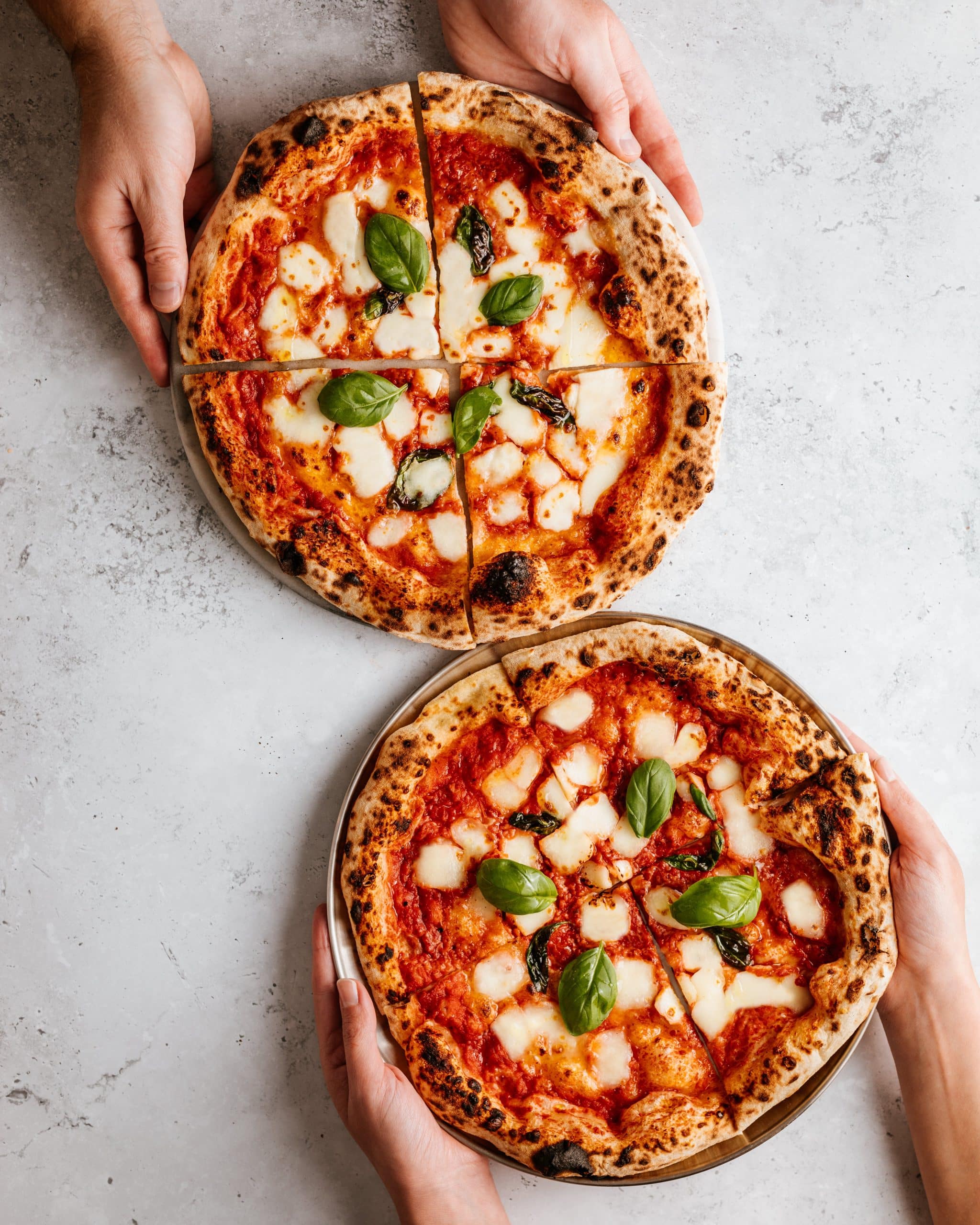If you're looking for nutritious and balanced meals for your furry best friend, look no further! In this article, you will find 5 easy homemade dog food recipes that will not only keep your dog happy and healthy, but also save you a trip to the store. From tasty chicken and rice to flavorful beef and vegetable stew, these recipes are sure to make your dog's tail wag with delight. So, get ready to roll up your sleeves and become your dog's personal chef as we dive into these delectable homemade dog food recipes. Your pup will thank you!

This image is property of images.pexels.com.
Choosing the Best Ingredients
Understanding Your Dog's Nutritional Needs
When it comes to preparing homemade dog food, it's important to understand your furry friend's nutritional needs. Dogs require a balanced diet that consists of proteins, carbohydrates, fats, vitamins, and minerals for optimal health. Depending on your dog's age, breed, and activity level, their nutritional requirements may vary. It's always a good idea to consult with your veterinarian to determine the specific dietary needs of your pet.
Common Ingredients to Avoid
While it's important to focus on selecting nutritious ingredients for your homemade dog food, it's equally important to be aware of ingredients that can be harmful to your four-legged friend. Some common ingredients to avoid in dog food recipes include chocolate, onions, garlic, grapes, raisins, avocados, and artificial sweeteners such as xylitol. These ingredients can be toxic to dogs and may lead to serious health issues.
Preferred Protein Sources
Protein is an essential component of a dog's diet and plays a crucial role in their overall health and development. When choosing protein sources for your homemade dog food, lean meats like chicken, beef, turkey, and salmon are excellent options. Not only are they rich in essential amino acids, but they also provide necessary nutrients like iron and zinc.
Beneficial Fruits and Vegetables
Adding fruits and vegetables to your homemade dog food can provide added vitamins, minerals, and antioxidants. Some beneficial options include sweet potatoes, carrots, green beans, peas, and apples. These ingredients can help support your dog's immune system, improve digestion, and provide a natural source of fiber.
Grains and Carbohydrate Options
Grains and carbohydrates are another important component of a well-balanced homemade dog food recipe. Options such as brown rice, quinoa, and oats can provide a good source of energy and fiber for your furry friend. It's important to note that some dogs may have food sensitivities or allergies to certain grains, so it's always best to monitor your dog's reaction when introducing new ingredients.
Basic Homemade Dog Food Recipe
Ingredients
To get started with homemade dog food, you'll need the following ingredients:
- Protein source (chicken, beef, turkey, salmon, etc.)
- Vegetables (sweet potatoes, carrots, green beans, peas, etc.)
- Grains or carbohydrates (brown rice, quinoa, oats, etc.)
- Essential supplements (fish oil, calcium, etc.)
- Water (for cooking)
Cooking Instructions
- Begin by cooking the protein source thoroughly. This can be done by boiling, grilling, or baking the meat until it reaches a safe internal temperature. Make sure to remove any bones or skin before adding it to the dog food mixture.
- While the protein source is cooking, prepare the vegetables by washing, peeling (if necessary), and chopping them into small, bite-sized pieces.
- Cook the grains or carbohydrates according to the package instructions. Make sure they are fully cooked and soft before adding them to the dog food mixture.
- Once all the ingredients are cooked and prepared, combine them in a large mixing bowl. Mix everything together until well combined.
- If desired, add essential supplements to the dog food mixture. This can include fish oil for added omega-3 fatty acids or calcium for bone health. Consult with your veterinarian to determine the appropriate supplements for your dog's specific needs.
- Allow the homemade dog food to cool before serving it to your furry friend. Store any leftovers in an airtight container in the refrigerator.
Variations and Customizations
The great thing about homemade dog food is that you can customize it to suit your dog's preferences and dietary needs. You can experiment with different protein sources, vegetables, and grains to keep your dog's meals interesting and nutritious. Just be sure to avoid harmful ingredients and consult with your veterinarian if you have any specific concerns or questions.
Recipe 1: Chicken and Sweet Potato Delight
Ingredients
- 2 cups of cooked chicken, shredded
- 1 cup of cooked sweet potatoes, mashed
- 1/2 cup of cooked carrots, finely diced
- 1/2 cup of cooked green beans, finely diced
- 1 cup of cooked brown rice
- 1 teaspoon of fish oil (optional)
Instructions
- In a large mixing bowl, combine the shredded chicken, mashed sweet potatoes, diced carrots, diced green beans, and cooked brown rice.
- Mix everything together until well combined.
- If desired, add fish oil for an extra boost of omega-3 fatty acids.
- Allow the mixture to cool before serving it to your dog.
- Store any leftovers in an airtight container in the refrigerator.
Important Notes
This recipe is packed with protein, vitamins, and fiber, making it a nutritious and delicious option for your furry friend. Remember to adjust the portion size based on your dog's size, activity level, and dietary needs.
Recipe 2: Beef and Rice Medley
Ingredients
- 2 cups of cooked beef, ground or shredded
- 1 cup of cooked white rice
- 1/2 cup of cooked peas, mashed
- 1/2 cup of cooked carrots, finely diced
- 1/4 cup of beef broth (low-sodium)
Instructions
- In a large mixing bowl, combine the cooked beef, cooked white rice, mashed peas, finely diced carrots, and beef broth.
- Mix everything together until well blended.
- Allow the mixture to cool before serving it to your dog.
- Serve the beef and rice medley as is, or add it as a topper to your dog's regular kibble for added flavor and nutrition.
Serving Suggestions
For an extra special treat, you can serve this beef and rice medley warm. Just make sure it has cooled down enough to prevent any burns. Remember to adjust the portion size based on your dog's size, activity level, and dietary needs.

This image is property of images.pexels.com.
Recipe 3: Salmon and Quinoa Surprise
Ingredients
- 2 cups of cooked salmon, flaked
- 1 cup of cooked quinoa
- 1/2 cup of cooked carrots, finely diced
- 1/2 cup of cooked green beans, finely diced
- 1/4 cup of plain Greek yogurt
Instructions
- In a large mixing bowl, combine the flaked salmon, cooked quinoa, finely diced carrots, finely diced green beans, and plain Greek yogurt.
- Mix everything together until well combined.
- Allow the mixture to cool before serving it to your dog.
- Serve the salmon and quinoa surprise as a standalone meal or mix it with your dog's regular kibble for added variety.
Nutritional Benefits
Salmon is an excellent source of omega-3 fatty acids, which can help promote a healthy coat and skin for your furry friend. Quinoa provides a good source of protein and dietary fiber. Combined with the vegetables and Greek yogurt, this recipe is a well-balanced and tasty option for your dog.
Recipe 4: Turkey and Pumpkin Stew
Ingredients
- 2 cups of cooked turkey, shredded
- 1 cup of cooked pumpkin puree
- 1/2 cup of cooked green beans, finely diced
- 1/2 cup of cooked carrots, finely diced
- 1/4 cup of chicken broth (low-sodium)
Instructions
- In a large mixing bowl, combine the shredded turkey, pumpkin puree, finely diced green beans, finely diced carrots, and chicken broth.
- Mix everything together until well blended.
- Allow the mixture to cool before serving it to your dog.
- This turkey and pumpkin stew can be served as a standalone meal or mixed with your dog's regular kibble for added flavor.
Storage Tips
You can store any leftovers of the turkey and pumpkin stew in an airtight container in the refrigerator for up to three days. Alternatively, you can freeze individual portions in freezer-safe containers for longer storage.

This image is property of images.pexels.com.
Recipe 5: Vegetarian Lentil Loaf
Ingredients
- 2 cups of cooked lentils
- 1 cup of cooked sweet potatoes, mashed
- 1/2 cup of cooked carrots, finely diced
- 1/2 cup of cooked peas, mashed
- 1/4 cup of vegetable broth (low-sodium)
- 1 tablespoon of nutritional yeast (optional)
Instructions
- In a large mixing bowl, combine the cooked lentils, mashed sweet potatoes, finely diced carrots, mashed peas, vegetable broth, and nutritional yeast.
- Mix everything together until well combined.
- Allow the lentil loaf mixture to cool before shaping it into a loaf or individual patties.
- Bake the lentil loaf in a preheated oven at 350°F (180°C) for 25-30 minutes, or until firm and golden brown.
- Allow the lentil loaf to cool before serving it to your dog.
Adding Essential Supplements
Since this recipe is vegetarian, it's important to ensure your dog gets all the necessary nutrients. You can add essential supplements like fish oil or flaxseed oil to provide omega-3 fatty acids, as well as calcium supplements to support bone health. Consult with your veterinarian to determine the appropriate supplements for your dog.
Feeding Guidelines and Tips
Determining Proper Portion Sizes
When feeding your dog homemade food, it's essential to determine the proper portion sizes. The amount of food your dog needs will depend on their size, age, activity level, and overall health. It's best to consult with your veterinarian to determine the appropriate portion sizes for your specific dog.
Transitioning to Homemade Food
If you're transitioning your dog from commercial dog food to homemade food, it's important to do it gradually. Start by replacing a small portion of their regular food with homemade food and gradually increase the proportion over a period of one to two weeks. This helps to avoid any digestive upsets and allows your dog to adjust to the new diet.
Common Dietary Considerations
While homemade dog food can be a healthy alternative, it's important to consider any specific dietary needs or restrictions your dog may have. For example, some dogs may have allergies to certain ingredients like grains or specific proteins. It's best to consult with your veterinarian to determine the right ingredients and recipe for your dog's individual needs.
Seeking Veterinary Advice
Before embarking on a homemade dog food journey, it's highly recommended to seek the advice of a veterinarian. They can provide guidance on the right ingredients, portion sizes, and overall dietary plan for your furry friend. Your veterinarian will consider your dog's specific needs and help you create a well-balanced diet that meets their nutritional requirements.
Benefits of Homemade Dog Food
Control over Ingredients and Quality
One of the significant benefits of homemade dog food is the control it gives you over the ingredients and quality of the food you're feeding your dog. By preparing the food yourself, you can ensure that your dog is getting high-quality proteins, fresh vegetables, and nutrients without any harmful additives or preservatives.
Improving Digestive Health
Many dogs experience digestive issues caused by commercial dog food, which often contains fillers, artificial ingredients, and additives. Homemade dog food allows you to tailor the recipe to meet your dog's specific dietary needs, which can help improve their digestion and overall gastrointestinal health.
Managing Food Allergies
If your dog has food allergies or sensitivities, homemade dog food can be a great option. By eliminating potential allergens from their diet, such as grains or specific proteins, you can help manage their allergies and reduce uncomfortable symptoms like itching, digestive upset, or skin irritations.
Weight Management and Special Diets
Homemade dog food can be beneficial for dogs with weight management issues or those who require a special diet due to health conditions. With careful portion control and the right balance of nutrients, you can help your dog maintain a healthy weight, manage conditions like diabetes or kidney disease, and support their overall well-being.
Important Safety Considerations
Food Safety and Storage
Just like with human food, it's crucial to practice good food safety when preparing homemade dog food. This includes washing your hands thoroughly before and after handling ingredients, using clean utensils and surfaces, and storing the food properly in the refrigerator or freezer to prevent bacterial growth. Make sure to follow safe food handling practices to ensure your dog's safety.
Avoiding Harmful Ingredients
While many foods are safe and nutritious for dogs, there are certain ingredients that can be harmful or even toxic to them. Avoid using ingredients like chocolate, onions, garlic, grapes, raisins, avocados, and artificial sweeteners such as xylitol. Always double-check the safety of ingredients before using them in your homemade dog food recipes.
Cooking Techniques and Hygiene
When cooking homemade dog food, it's important to use proper cooking techniques to ensure that the food is safe and digestible for your dog. Avoid using excessive amounts of oils, spices, or salt as they can be harmful to your furry friend. Additionally, maintain good hygiene by cleaning your cooking utensils and surfaces thoroughly before and after preparation.
Monitoring for Any Adverse Reactions
After introducing homemade dog food into your dog's diet, it's essential to monitor them for any adverse reactions or changes in behavior. If you notice any signs of discomfort, digestive upset, or allergic reactions, stop feeding the homemade food immediately and consult with your veterinarian. They can help identify any underlying issues and guide you towards the appropriate dietary plan for your dog.
Preparing homemade dog food can be a rewarding experience that allows you to provide your four-legged friend with a nutritious and tasty diet. By understanding your dog's nutritional needs, selecting the best ingredients, and following proper cooking techniques, you can create wholesome meals that support their overall health and well-being. Remember to consult with your veterinarian for personalized advice and guidance, as every dog is unique and may have specific dietary requirements. With a little love and effort, you'll be serving up homemade dog food recipes that your furry friend will wag their tail for.


